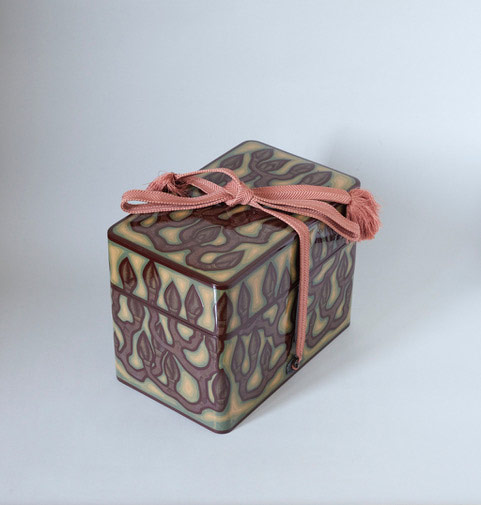
Born in Takamatsu, Isoi Joshin first studied lacquer arts at the Kagawa Prefectural Crafts School. After graduating in 1903 he moved to Osaka for a time to continue his studies. In 1904 he won a prize for a piece he exhibited at the St. Louis World Exposition. In 1909 he left the art dealer Yamanaka Company to return to Takamatsu where he founded his own studio. In 1916 he began teaching at the Kagawa Prefectural Crafts School. In 1919 and 1920 he exhibited at the Noten. In 1929 he was accepted as an exhibitor at the 10th Teiten. Subsequently he exhibited annually at the Teiten, the Shin-Bunten and Hoshukuten until the War. After the War he returned to the government sponsored exhibitions with the Nitten in 1946 at which he continued to exhibit until 1956. That year Joshin was designated an important intangible cultural property (commonly known as a Living National Treasure) for his skill at kimma or fine line decoration. His work is famous for the techniques of carved lacquer and kimma.
Isoi Joshin worked in this style from the 14th Teiten (1933) to the Hoshukuten (1940). For other examples of his work in this style, c.f. The Nittenshi, volume 11, page 265, number 26 (14th Teiten); volume 12, page 429, number 14 (Bunten Kansaten); and volume 14, page 266, number 50 (Hoshukuten). For biographical information and other examples of his work, c.f. Japanese Lacquer Art: Modern Masterpieces.
Price On Request
|

